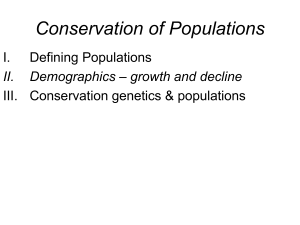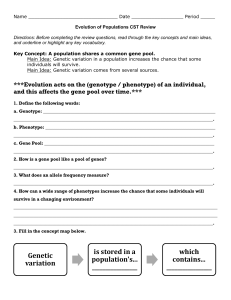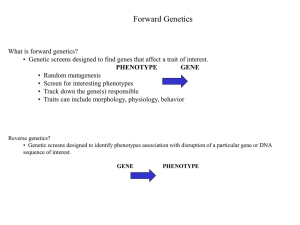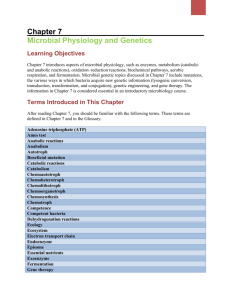AP Bio TRi1 Ch. 8,22-24, 52-55
advertisement
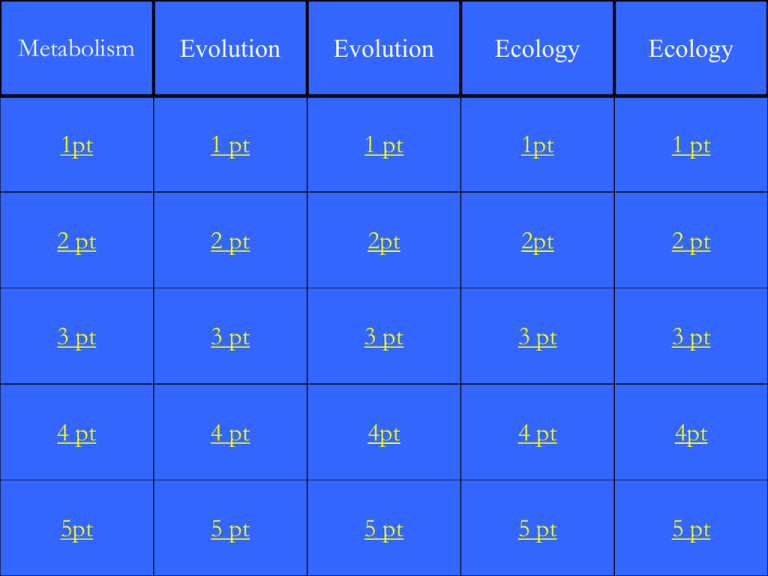
Metabolism Evolution Evolution Ecology Ecology 1pt 1 pt 1 pt 1pt 1 pt 2 pt 2 pt 2pt 2pt 2 pt 3 pt 3 pt 3 pt 3 pt 3 pt 4 pt 4 pt 4pt 4 pt 4pt 5pt 5 pt 5 pt 5 pt 5 pt Which term most precisely describes the cellular process of breaking down large molecules into smaller ones? A) catalysis B) metabolism C) anabolism D) dehydration E) catabolism E) catabolism Whenever energy is transformed, there is always an increase in the A) free energy of the system. B) free energy of the universe. C) entropy of the system. D) entropy of the universe. E) enthalpy of the universe. D) entropy of the universe. A chemical reaction that has a negative △G is correctly described as A) endergonic. B) endothermic. C) enthalpic. D) spontaneous. E) exothermic. E) exothermic. Which of the following is true of enzymes? A) Enzymes increase the rate of chemical reaction by lowering activation energy barriers. B) Enzymes may require a nonprotein cofactor or ion for catalysis to take speed up more appreciably than if the enzymes act alone. C) Enzyme function is increased if the three-dimensional structure or conformation of an enzyme is altered. D) Enzyme function is independent of physical and chemical environmental factors such as pH and temperature. A) Enzymes increase the rate of chemical reaction by lowering activation energy barriers. Increasing the substrate concentration in an enzymatic reaction could overcome which of the following? A) denaturization of the enzyme B) allosteric inhibition C) competitive inhibition D) saturation of the enzyme activity E) insufficient cofactors . C) competitive inhibition During a study session about evolution, one of your fellow students remarks, "The giraffe stretched its neck while reaching for higher leaves; its offspring inherited longer necks as a result." Which statement is most likely to be helpful in correcting this student's misconception? A) Spontaneous mutations can result in the appearance of new traits. B) Only favorable adaptations have survival value. C) Characteristics acquired during an organism's life are generally not passed on through genes. D) Disuse of an organ may lead to its eventual disappearance. E) Overproduction of offspring leads to a struggle for survival. C) Characteristics acquired during an organism's life are generally not passed on through genes Of the following anatomical structures, which is homologous to the wing of a bird? A) Dorsal fin of a shark B) Hindlimb of a kangaroo C) Wing of a butterfly D) Tail fin of a flying fish E) Flipper of a whale E) Flipper of a whale In a hypothetical environment, fishes called pike-cichlids are visual predators of algae-eating fish (i.e., they locate their prey by sight). If a population of algae-eaters experiences predation pressure from pike-cichlids, which of the following should least likely be observed in the algae-eater population over the course of many generations? A) Selection for drab coloration of the algae-eaters B) Selection for nocturnal algae-eaters (active only at night) C) Selection for larger female algae-eaters, bearing broods composed of more, and larger, young D) Selection for algae-eaters that become sexually mature at smaller overall body sizes E) Selection for algae-eaters that are faster swimmers C) Selection for larger female algae-eaters, bearing broods composed of more, and larger, young About which of these did Darwin have a poor understanding? A) that individuals in a population exhibit a good deal of variation B) the sources of genetic variations among individuals C) that much of the variation between individuals in a population is inherited D) the factors that cause individuals in populations to struggle for survival E) how a beneficial trait becomes more common in a population over the course of generations B) the sources of genetic variations among individuals Each of the following has a better chance of influencing gene frequencies in small populations than in large populations, but which one most consistently requires a small population as a precondition for its occurrence? A) Mutation B) Non-random mating C) Genetic drift D) Gene flow E) Natural selection C) Genetic drift Which of these naturalists synthesized a concept of natural selection independently of Darwin? A) Alfred Wallace B) Gregor Mendel C) Charles Lyell D) John Henslow E) Thomas Malthus A) Alfred Wallace Over time, the movement of people on Earth has steadily increased. T has altered the course of human evolution by increasing A) non-random mating. B) geographic isolation. C) genetic drift. D) mutations. E) gene flow. E) gene flow. Which describes an African butterfly species that exists in two strikingly different color patterns? A) artificial selection B) directional selection C) stabilizing selection D) disruptive selection E) sexual selection D) disruptive selection No two people are genetically identical, except for identical twins. The chief cause of genetic variation among human individuals is A) new mutations that occurred in the preceding generation. B) the reshuffling of alleles in sexual reproduction. C) genetic drift due to the small size of the population. D) geographic variation within the population. E) environmental effects. B) the reshuffling of alleles in sexual reproduction. Which of the following factors would not contribute to allopatric speciation? A) A population becomes geographically isolated from the parent population. B) The separated population is small, and genetic drift occurs. C) The isolated population is exposed to different selection pressures than the ancestral population. D) Different mutations begin to distinguish the gene pools of the separated populations. E) Gene flow between the two populations is extensive. E) Gene flow between the two populations is extensive. Which of the following abiotic factors has the greatest influence on the metabolic rates of plants and animals? A) water B) wind C) temperature D) rocks and soil E) disturbances C) temperature Which of the following causes Earth's seasons? A) global air circulation B) global wind patterns C) ocean currents D) changes in Earth's distance from the sun E) the tilt of Earth's axis E) the tilt of Earth's axis Which curve best describes survivorship in elephants? A In which of the following habitats would you expect to find the largest number of K-selected individuals? A) a recently abandoned agricultural field in Ohio B) the sand dune communities of south Lake Michigan C) the flora and fauna of a coral reef in the Caribbean D) South Florida after a hurricane E) a newly emergent volcanic island C) the flora and fauna of a coral reef in the Caribbean In the nitrogen cycle, the bacteria that replenish the atmosphere with N2 are A) Rhizobium bacteria. B) nitrifying bacteria. C) denitrifying bacteria. D) methanogenic protozoans. E) nitrogen-fixing bacteria C) denitrifying bacteria. The most common kind of dispersion in nature is A) clumped. B) random. C) uniform. D) indeterminate. E) dispersive. A) clumped. An area in which different terrestrial biomes grade into each other is known as a(n) A) littoral zone. B) vertically stratified canopy. C) ecotone. D) abyssal zone. E) cline. C) ecotone. The sum total of an organism's interaction with the biotic and abiotic resources of its environment is called its A) habitat. B) logistic growth. C) biotic potential. D) carrying capacity. E) ecological niche. E) ecological niche. Which population is in the process of decreasing? A) I B) II C) III D) I and II E) II and III B) II Which of the following best describes resource partitioning? A) Competitive exclusion results in the success of the superior species. B) Slight variations in niche allow similar species to coexist. C) Two species can coevolve to share the same niche. D) Differential resource utilization results in the decrease in species diversity E) A climax community is reached when no new niches are available. B) Slight variations in niche allow similar species to coexist.





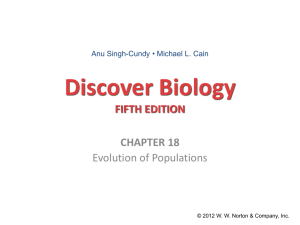
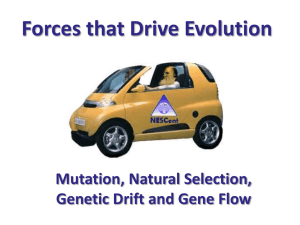
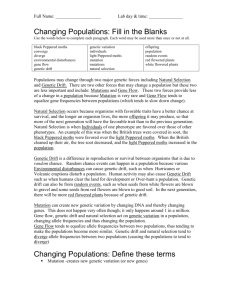
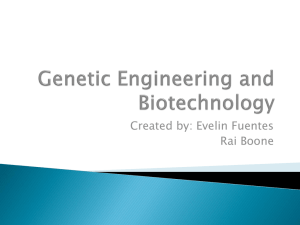


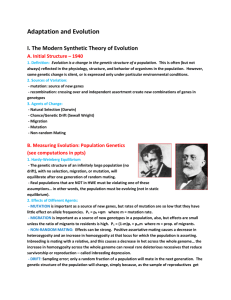
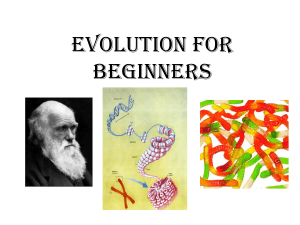

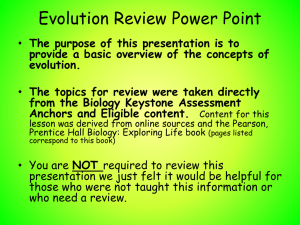
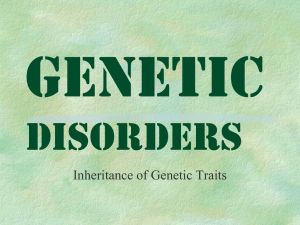
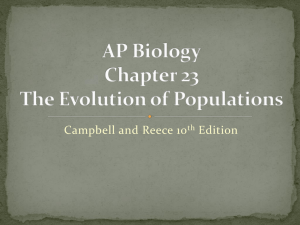
![Evo_Gen_Group_Introfinal_draft_[1.2]](http://s3.studylib.net/store/data/006798616_2-2ab0c6a2225107e0fac598a2105db405-300x300.png)
